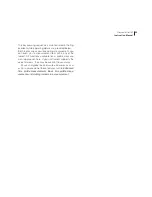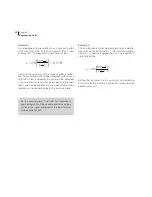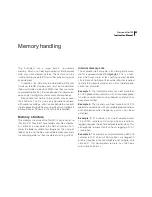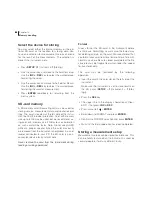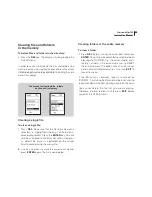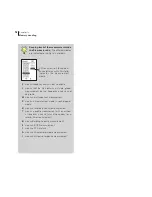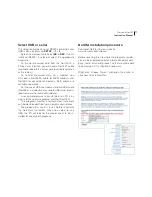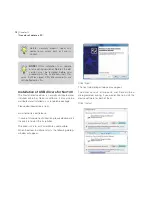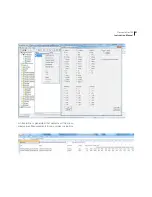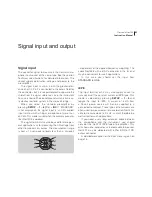
72
Chapter 13
Automatic storing of data and noise monitoring
•
Repeat
, which causes the instrument to store the
acquired data and then restart immediately and
make another measurement using the same meas-
urement setup and duration. Repeat applies to
measurements terminated by themselves only. If
you terminate a measurement by pressing stop, the
instrument will not restart. Note that some time will
be spent on storing the acquired data, Therefore a
slight delay (typically 3–4 seconds) in the restart
moment will be observed.
•
Synchro
, which compensates for the time spent on
housekeeping (i.e. storage of data etc.) to maintain
synchronisation with the time of day. This works in the
way that the instrument synchronises itself with the
next full hour of the time of day. To be active, synchro
requires a minimum measurement time (duration) of
30 seconds per individual measurement.
Synchro – an example
Assume that you set up the instrument to measure in
periods of one hour and that you start the measurement
at 08:52:40. The first period will last 7 minutes and 20
seconds ending at 09:00:00. To give room for storage,
the succeeding period will then be truncated and start a
couple of seconds after 09:00:00. Each next measure-
ment will then be a little less than an hour long to enable
ending again at 10:00:00, 11:00:00 etc.
A similar situation when the measurement period is
set to 15 minutes will be: The first period is as before 7
minutes and 20 seconds. The following periods are all
shortened so the sum of the time for measurement and
storing are kept within the limit of 15 minutes. The instru-
ment will start a new measurement period a couple of
seconds after the following hour: 09:00, 09:15, 09:30,
09:45, 10:00, 10:15 etc.
We recommend limiting the use of the synchro-fea-
ture for measurement periods which are either a multi-
ple of one hour or one hour divided by a whole number
as the feature has been designed with this limitation in
mind.
If you want to apply short measurement periods be-
low a few minutes, we generally recommend using the
level versus time feature, as this gives no gap in the
measured levels between the different periods.
Keyboard lockout
– locking the keyboard
to prevent unauthorized operation. You may
lock the keyboard to prevent the instrument
from being tampered with while it is left on
its own. On/off is only locked if a measurement is
running.
To lock the keyboard:
Press , , , to lock the keyboard
To unlock a locked keyboard:
Press , , , to unlock the keyboard
Note that the instrument must show the sound level
meter display for this to work (in this display the
cursor keys are not used).
Going to measure very high levels?
As an optional extension the Nor140 is able
to measure very high sound pressure levels
without changing the microphone cartridge
– see High levels in the Technical specifications for
details.
Summary of Contents for nor140
Page 4: ......
Page 16: ......
Page 17: ...nor140 SOUND ANALYSER ...
Page 18: ......
Page 212: ...194 ...
Page 218: ......


